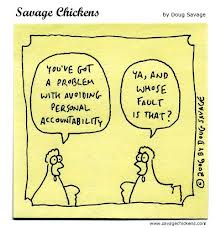I've
already heard the words being spoken, those words that seem fundamental towards
the end of each calendar year. "In January, I'm going on a diet! That's my
resolution..."
When we make a resolution, we are making a promise to ourselves with the intention of doing something that yields change, generally in the direction of self-improvement. The fitness industry banks on us making these promises and anticipates the January onslaught of new member enrollments. They often will tempt us with a great deal for the entire year and in actual fact, know that a large percentage of the new members will stop attending within a few months. If people were able to hold onto their desire for change as of January 1, there would be more people than gyms could manage.
Why is it that we have such great intentions only to realize a few weeks later we've lost our way?
My thought for the week is to offer ourselves more compassion when trying to make a change. It is said that permanent change takes anywhere between 21-30 days to take hold. That translates into it taking time. We often lose our way because we become impatient with the process and perhaps don't see any change in the time we expect.
Change also takes conscious and consistent choice and practice. If we want to create a new way of being or doing, we need to practice it over and over again. You know, try it on. See how it fits. We need to shift the unfamiliar feeling to a familiar one and that takes repetition.
One of my favorite sayings is, "consistency is the key". If we go to a yoga class randomly, then what we get out of it will likely be momentary. If we want to invite a more centered way of living into daily life, we have to create ways of doing that...DAILY! The magic happens in the doing.
So if you are thinking about making a resolution I would suggest being clear on ONE thing. Design a plan that fits into your life and stick with it, without excuse, interruption or hesitation for at least a month. Avoid the trap of letting what you would like to shift, move down your list of priorities. Keep it in the top position until you feel that it's embedded--like brushing our teeth every day.
And if now isn't the time, then go easy on yourself and ask the inner critic to keep the noise down. In this moment, we are all as we should be; beautiful, unique beings with nothing that needs to be fixed.
Center your awareness into the middle of your heart, breathe into that space deeply and notice how incredible you are!
Happy New Year and may 2013 hold peace, growth, good health and deep joy for all of us.
When we make a resolution, we are making a promise to ourselves with the intention of doing something that yields change, generally in the direction of self-improvement. The fitness industry banks on us making these promises and anticipates the January onslaught of new member enrollments. They often will tempt us with a great deal for the entire year and in actual fact, know that a large percentage of the new members will stop attending within a few months. If people were able to hold onto their desire for change as of January 1, there would be more people than gyms could manage.
Why is it that we have such great intentions only to realize a few weeks later we've lost our way?
My thought for the week is to offer ourselves more compassion when trying to make a change. It is said that permanent change takes anywhere between 21-30 days to take hold. That translates into it taking time. We often lose our way because we become impatient with the process and perhaps don't see any change in the time we expect.
Change also takes conscious and consistent choice and practice. If we want to create a new way of being or doing, we need to practice it over and over again. You know, try it on. See how it fits. We need to shift the unfamiliar feeling to a familiar one and that takes repetition.
One of my favorite sayings is, "consistency is the key". If we go to a yoga class randomly, then what we get out of it will likely be momentary. If we want to invite a more centered way of living into daily life, we have to create ways of doing that...DAILY! The magic happens in the doing.
So if you are thinking about making a resolution I would suggest being clear on ONE thing. Design a plan that fits into your life and stick with it, without excuse, interruption or hesitation for at least a month. Avoid the trap of letting what you would like to shift, move down your list of priorities. Keep it in the top position until you feel that it's embedded--like brushing our teeth every day.
And if now isn't the time, then go easy on yourself and ask the inner critic to keep the noise down. In this moment, we are all as we should be; beautiful, unique beings with nothing that needs to be fixed.
Center your awareness into the middle of your heart, breathe into that space deeply and notice how incredible you are!
Happy New Year and may 2013 hold peace, growth, good health and deep joy for all of us.























